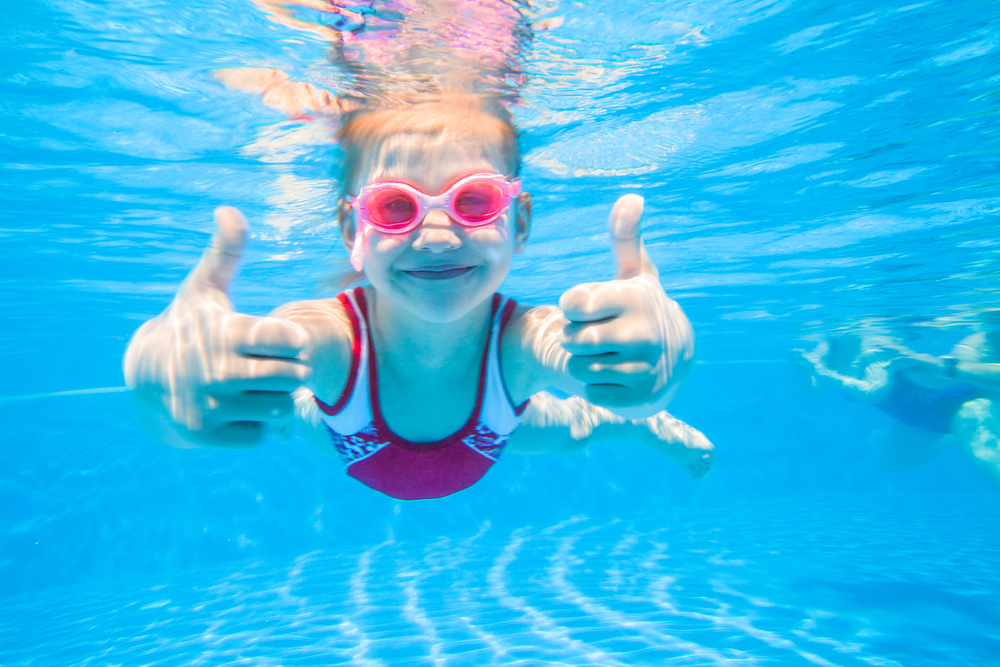As we continue to enjoy the outdoors this summer, Radiant Primary Care in Victorville, CA has these water safety tips for kids ready so your family can stay safe.
Did You Know That Swimming Has A Positive Influence On A Child’s Well-Being?
- Comprehensive Physical Engagement: Swimming emerges as an exceptional form of physical activity that involves the entire body, promoting the development of multiple muscle groups including the arms, legs, core, and back.
- Improved Cardiovascular Health: Functioning as an outstanding cardiovascular workout, swimming raises the heart rate, enhances circulation, and increases lung capacity. Regular swimming sessions contribute to cultivating a strong and healthy cardiovascular system in children, fostering endurance and stamina.
- Progressive Refinement of Motor Skills: Proficiency in swimming requires coordinated movements and adept body control within the water’s embrace. Through practicing various swimming strokes, children enhance their motor skills, balance, and coordination.
- Increased Flexibility and Range of Motion: Water’s buoyancy reduces joint impact, allowing for greater freedom of movement. Swimming acts as a catalyst for improving flexibility and range of motion, as children move their limbs through the watery medium.
- Upright Posture and Body Alignment: Swimming promotes favorable posture and body alignment. The water’s resistance compels children to maintain correct bodily alignment for efficient movement in the water. Regular swimming helps improve posture, strengthen core muscles, and reduce postural irregularities.
- Enhanced Confidence and Self-Esteem: Proficiency in swimming and the mastery of aquatic skills can significantly boost a child’s self-assurance and self-esteem. Overcoming challenges in the water, setting and achieving goals, all contribute to a sense of accomplishment, leading to increased confidence both in and out of the water.
It remains crucial to emphasize that children must have constant supervision while participating in swimming, regardless of their skill level. Qualified instructors should supervise swimming lessons in an environment characterized by safety and careful oversight.
How Can I Ensure My Child’s Safety Around Water?
Children’s innate curiosity and attraction to water demand heightened vigilance to ensure their safety. Whether you’re enjoying the outdoors or at home, it’s vital to establish effective water safety protocols.
1. Emergency Readiness Matters: Being prepared for unforeseen situations is paramount. Teach your child how to call 911 in emergencies and ensure that adults and older children nearby are trained in CPR. Preparedness can make a significant difference during critical moments.
2. Continuous Vigilance is Essential: Keep your child within arm’s reach when they’re in or near water. Even brief distractions can lead to accidents, particularly in bathtubs. Maintain tactile contact with your child and stay aware of their location. If you step away from the water, take your child along to ensure their safety.
3. Designate a Water Watcher: Assign a responsible adult as the “water watcher,” solely dedicated to supervising children around water. The water watcher should avoid distractions like phones or other activities. It’s crucial to switch roles with another attentive adult to ensure uninterrupted supervision.
4. Instill Water Safety Rules: Educate your child about crucial water safety rules from an early age. Stress the significance of swimming with an adult water watcher and discourage jumping into unfamiliar water bodies or pushing others. When encountering posted water rules, read and explain them to your child or have them read aloud to you.
5. Secure Water Access: Install fencing around pools and use locks on doors leading to pools, hot tubs, and bathrooms to prevent unsupervised water access. Consider installing pool alarms that notify you if a child enters the water unnoticed. Also, be cautious of containers with water around the house, promptly emptying them. Emptying water containers or buckets is often overlooked, but it’s a crucial step when you have very young children.
6. Enroll in Swim Lessons: Initiate swim lessons as soon as your child is ready to enhance their water safety. Look for reputable programs like those from the Red Cross and local facilities such as the YMCA. Parent-child water play classes are available for children as young as six months, providing a comfortable introduction to the pool environment. Consult your pediatrician to determine the optimal time for your child to begin lessons.
7. Properly Fit Life Jackets: When participating in water activities, ensure your child wears a well-fitting life jacket approved by the U.S. Coast Guard. Avoid relying on air-filled toys or foam devices as substitutes. Even with a life jacket, stay aware of your child’s whereabouts in the water.
8. Lead Through Example: Children learn by observing and emulating adults, especially parents. Demonstrate safe behavior by adhering to water safety rules yourself. Showcase that following safety guidelines is integral to enjoying water responsibly.
Remember, unwavering supervision, swimming proficiency, clear safety rules, correct flotation device usage, and hazard awareness are pivotal in creating a secure and enjoyable water experience for children. Let’s prioritize water safety, ensuring each water-related adventure is filled with peace of mind and joyful memories.











